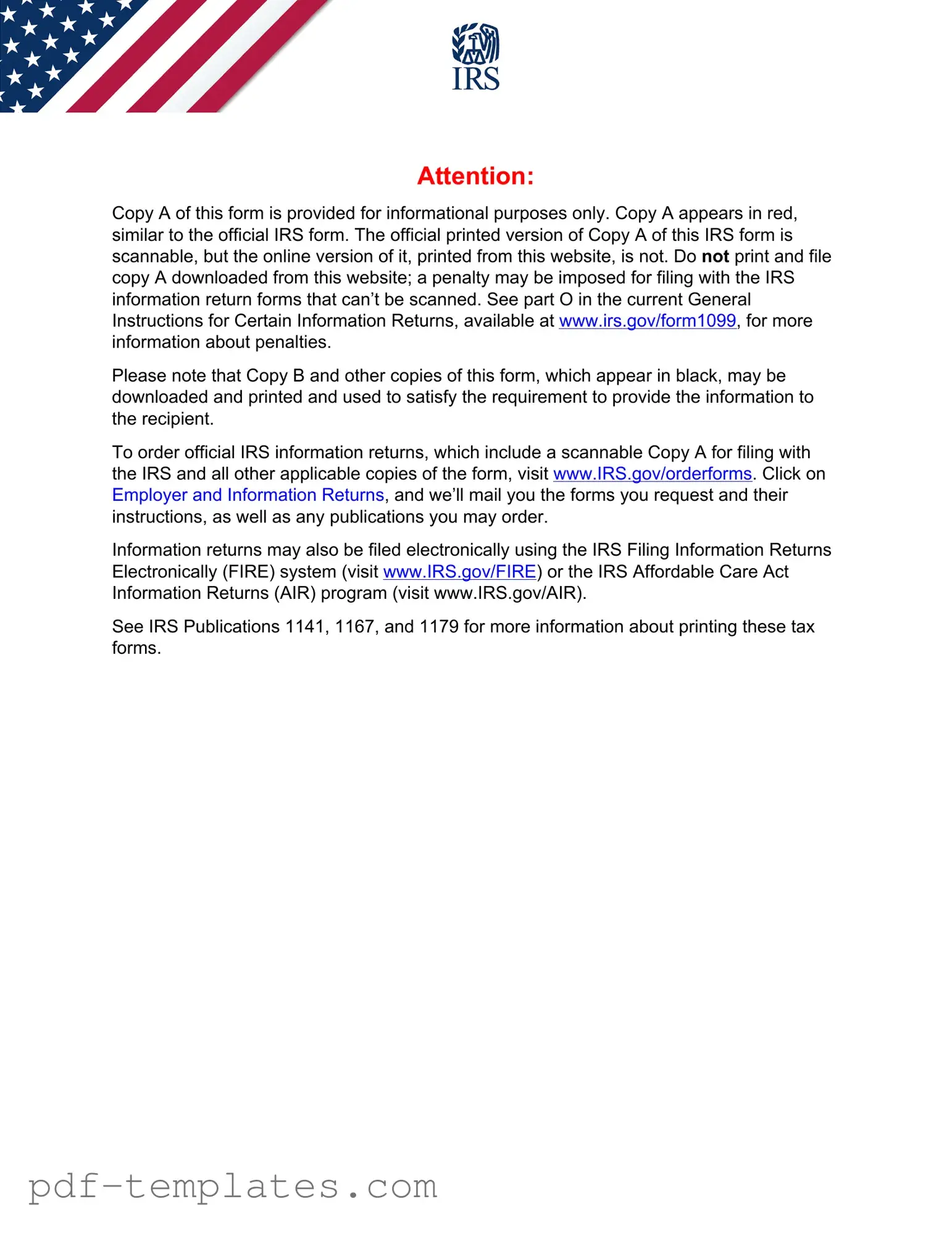The 1099-MISC form is one of the most well-known alternatives to the 1099-NEC. Both forms serve the purpose of reporting various types of income received by non-employees. However, the 1099-MISC is more general and covers a wider range of income types, such as rents, prizes, and awards. The 1099-NEC specifically focuses on nonemployee compensation, which includes payments made to independent contractors. This distinction is crucial for both the payer and the recipient when filing taxes, as it determines how the income is reported and taxed.
Another similar document is the W-2 form, which is used for reporting wages paid to employees. Unlike the 1099-NEC, the W-2 includes information about withheld taxes, such as federal income tax, Social Security, and Medicare. The W-2 is essential for employees to accurately report their earnings and tax obligations. While both forms are used to report income, the key difference lies in the employment status of the recipient. Employees receive a W-2, while independent contractors receive a 1099-NEC.
Understanding the various forms involved in tax reporting is essential for individuals, especially in California where earthquake insurance is also a consideration. For those seeking coverage, the California Earthquake Authority form is crucial as it collects necessary applicant information for securing protection against seismic damage. This highlights the importance of preparedness and proper documentation as homeowners navigate through the insurance process. For additional resources, you can find All California Forms that may assist in managing various forms effectively.
The 1099-DIV form is also comparable to the 1099-NEC, as it reports dividends and distributions received by shareholders. While the 1099-NEC focuses on compensation for services rendered, the 1099-DIV is concerned with investment income. Both forms require the payer to report amounts to the IRS and provide copies to the recipients. Understanding the differences is important for recipients to ensure they report their income correctly, especially when dealing with investment earnings versus service payments.
Similar to the 1099-NEC, the 1099-INT form is used to report interest income. This form is issued by banks or financial institutions to report interest payments made to individuals. While the 1099-NEC is for nonemployee compensation, the 1099-INT focuses solely on interest income. Recipients must report this income on their tax returns, and understanding which form applies to their situation is vital for accurate tax reporting.
The 1099-B form is another document that shares similarities with the 1099-NEC. It reports proceeds from broker and barter exchange transactions. While the 1099-NEC is used for reporting payments for services, the 1099-B is specific to transactions involving the sale of stocks, bonds, and other securities. Both forms require careful reporting to the IRS and to the recipients, but they pertain to different types of income, highlighting the importance of accurate classification.
The 1099-R form also bears resemblance to the 1099-NEC, as it reports distributions from pensions, annuities, retirement plans, and other similar sources. While the 1099-NEC focuses on payments made for services, the 1099-R is concerned with retirement income. Recipients of this form must report these distributions on their tax returns, and understanding the distinctions between these forms is essential for proper tax compliance.
The 1099-S form is used to report proceeds from real estate transactions. This form is similar to the 1099-NEC in that both require reporting of income to the IRS and the recipient. However, the 1099-S is specifically for real estate sales, whereas the 1099-NEC is for nonemployee compensation. This distinction is important for individuals involved in real estate transactions to ensure they meet their tax obligations.
The 1099-C form, which reports canceled debts, is another document similar to the 1099-NEC. When a creditor cancels a debt of $600 or more, they must report it using the 1099-C. While the 1099-NEC focuses on compensation for services, the 1099-C deals with income that may be taxable due to debt forgiveness. Recipients must be aware of how canceled debts can impact their tax liability, making understanding these forms crucial.
Lastly, the 1099-G form reports certain government payments, such as unemployment compensation and state tax refunds. Like the 1099-NEC, it requires reporting to both the IRS and the recipient. However, the 1099-G is specific to government-related income, while the 1099-NEC is focused on payments for services rendered by non-employees. Understanding the differences between these forms is vital for recipients to accurately report their income and comply with tax regulations.
